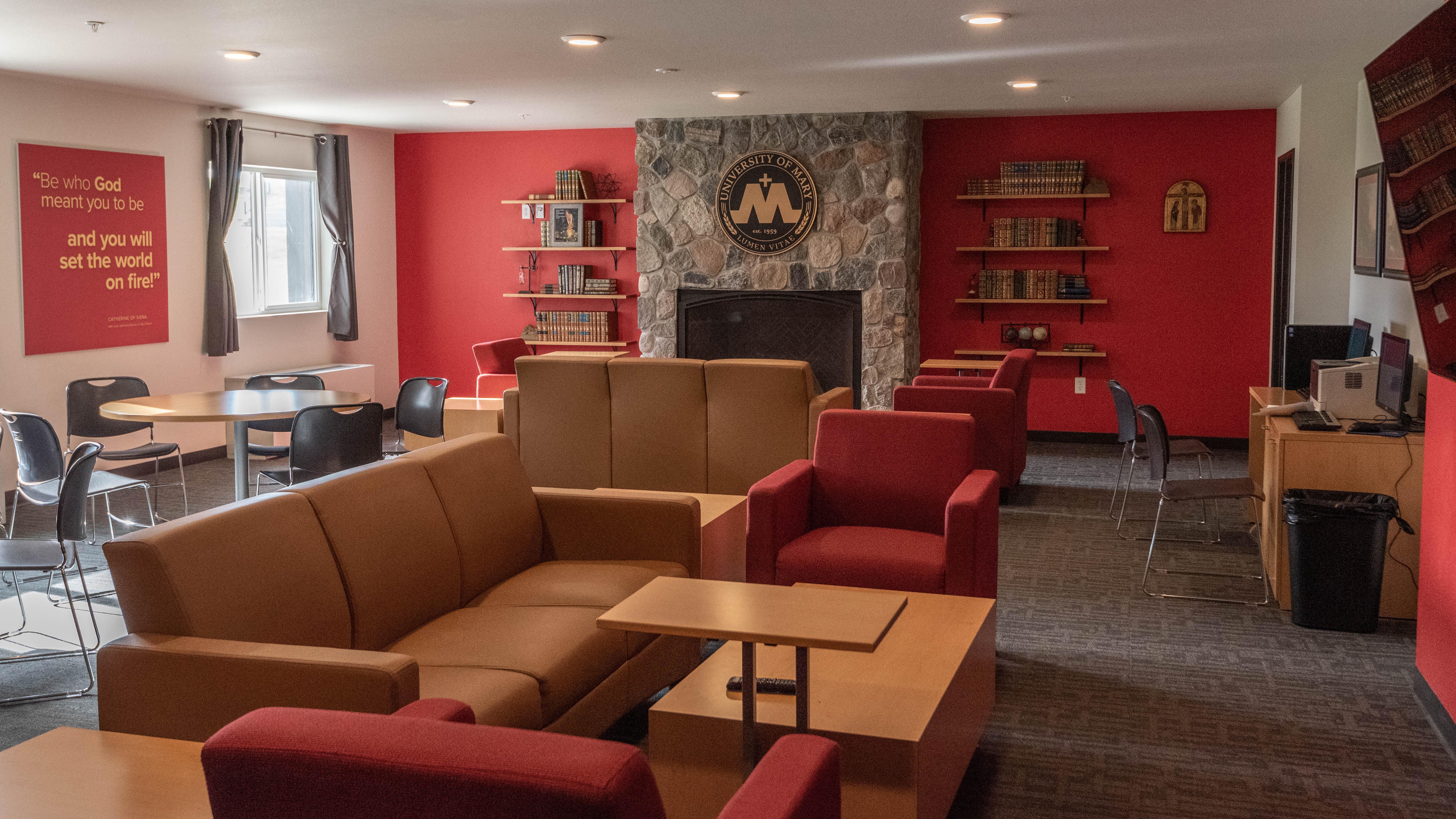On-Campus Residency Requirement

A residency requirement is a policy that requires students to live on campus for a specified amount of time. The length of the requirement varies depending on the type of college or university. Historically, private universities like the University of Mary invest in maintaining a residential campus where most students live on campus because students who live on campus are much more likely to be involved in campus activities that contribute to the student’s growth and development of leadership skills. Many private universities have residency requirements of three or even four years. Realizing the value of the residential experience, many public colleges and universities now also have residency requirements of at least one or two years. Generally, there are no residency requirements at community colleges and other schools with large commuter student populations.
Our Residency Requirement policy requires traditional undergraduate students to live on campus for a minimum of five semesters or until the semester after the student’s 21st birthday, whichever comes first. The complete policy appears in the University of Mary Student Handbook on page 29.
From its founding, the University of Mary has been committed to an educational experience encompassing the whole person. The University’s 2030 Strategic Plan is called Education for Life. This approach to education is rooted in the Catholic intellectual tradition so beautifully articulated by Saint John Henry Cardinal Newman in The Idea of a University. In this tradition, the value of living on campus is understood as an important component of a complete education. Newman describes how the university encourages intellectual, social, and spiritual development, emphasizing the role of relationships and friendships students form with professors, staff, and their peers when they live as part of a residential campus community.
Research supports Newman’s vision. Studies consistently show students living on campus are more likely to:
- Succeed academically.
- Persist to graduation.
- Be involved in co-curricular activities – helping students build leadership skills.
- Form life-long friendships with other students.
- Form friendships with students from different backgrounds.
- Experience a mentoring relationship with faculty and staff.
- Be satisfied with their educational experience.
At the University of Mary, students who live on campus report high levels of satisfaction with their experience. They rate the opportunity to be with friends, proximity to classes, the Crow’s Nest, chapels, the library, fitness and recreation facilities, and the convenience of not cooking and shopping for groceries among the top reasons for their satisfaction. They also give high marks to the care provided by the residence life staff.
The importance of a vibrant residence life culture is important in the recruitment and retention of students. How many students would enroll if the University of Mary did not have residence halls? How many students would persist to graduation?
It is paradoxical, but even students who live off campus benefit from residence halls. This point is clear when you ask, What would the campus be like for commuter students if there were no residence halls? Would the university be able to support facilities such as the Lumen Vitae Center, the Crow’s Nest, and the Fitness Center?

By living on campus, I participated in the community the University of Mary has formed, which taught me lessons about true friendship, lively faith, living in intentional community, connecting with faculty, and giving my best work in class and my jobs.
If you need special housing accommodations, you can visit our Residence Hall Accommodations page to learn more about what options are available. Exceptions to the on-campus residency requirement due to a disability may be approved if the student's needs cannot be adequately met within any available on-campus housing facilities.

